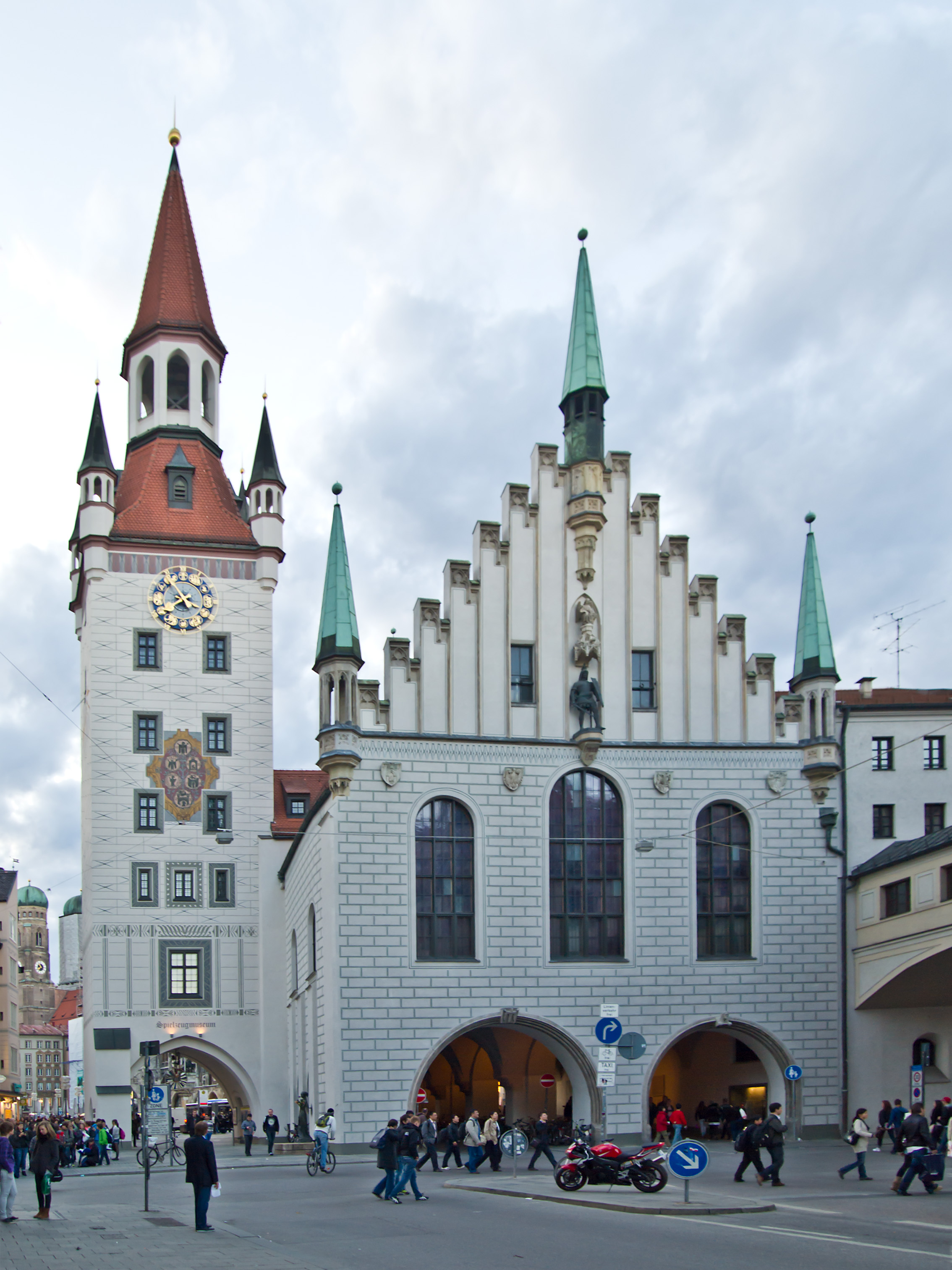Old Town Hall, Munich on:
[Wikipedia]
[Google]
[Amazon]

 The Old Town Hall (
The Old Town Hall (

 The Old Town Hall (
The Old Town Hall (German
German(s) may refer to:
* Germany (of or related to)
**Germania (historical use)
* Germans, citizens of Germany, people of German ancestry, or native speakers of the German language
** For citizens of Germany, see also German nationality law
**Ger ...
''Altes Rathaus''), until 1874 the domicile of the municipality
A municipality is usually a single administrative division having corporate status and powers of self-government or jurisdiction as granted by national and regional laws to which it is subordinate.
The term ''municipality'' may also mean the go ...
, serves today as a building for representative purposes for the city council in Munich
Munich ( ; german: München ; bar, Minga ) is the capital and most populous city of the States of Germany, German state of Bavaria. With a population of 1,558,395 inhabitants as of 31 July 2020, it is the List of cities in Germany by popu ...
. The Old Town Hall bounds the central square Marienplatz
Marienplatz (English: Mary's Square, i.e. St. Mary, Our Lady's Square) is a central square in the city centre of Munich, Germany. It has been the city's main square since 1158.
History
During the Middle Ages, markets and tournaments were held ...
on its east side.
Architecture
The building, documented for the first time in 1310, had its ''Grand Hall'' (Großer Saal) constructed in 1392/1394. The former ''Talburg Gate'' ( Talburgtor) of the first city wall serves as spire. The Old Town Hall was re-designed in late-gothic
Gothic or Gothics may refer to:
People and languages
*Goths or Gothic people, the ethnonym of a group of East Germanic tribes
**Gothic language, an extinct East Germanic language spoken by the Goths
**Crimean Gothic, the Gothic language spoken b ...
style by Jörg von Halsbach 1470–1480. The Grand Hall was decorated by the Morris dance
Morris dancing is a form of English folk dance. It is based on rhythmic stepping and the execution of choreographed figures by a group of dancers, usually wearing bell pads on their shins. Implements such as sticks, swords and handkerchiefs may ...
rs, created by Erasmus Grasser
Erasmus Grasser (c. 1450 – c. 1515) was a leading master builder and sculptor in Munich in the early 16th century.
Biography
He developed in an animated and realistic style, furthering on the works of Nikolaus Gerhaert.
Grasser worked mainly i ...
. After alterations of the facade during the Renaissance and again in the Baroque the building was restored in neo-gothic
Gothic Revival (also referred to as Victorian Gothic, neo-Gothic, or Gothick) is an architectural movement that began in the late 1740s in England. The movement gained momentum and expanded in the first half of the 19th century, as increasingly ...
style 1861–1864. In 1874 the municipality moved to the New Town Hall.
For the passage of increased road traffic the Old Town Hall was tunneled in 1877 with a drive-through and a separate pedestrian's passage, as well as once again in 1934/35, this time finally destroying the original ground floor. During World War II the building was severely damaged and the spire was reconstructed in 1971–1974. Parts of the neo-Gothic elements, especially the statues of Ludwig the Bavarian
Louis IV (german: Ludwig; 1 April 1282 – 11 October 1347), called the Bavarian, of the house of Wittelsbach, was King of the Romans from 1314, King of Italy from 1327, and Holy Roman Emperor from 1328.
Louis' election as king of Germany in ...
(west facade) and Henry the Lion
Henry the Lion (german: Heinrich der Löwe; 1129/1131 – 6 August 1195) was a member of the Welf dynasty who ruled as the duke of Saxony and Bavaria from 1142 and 1156, respectively, until 1180.
Henry was one of the most powerful German p ...
(east facade) and the gable design are preserved.
The Grand Hall was the venue for the speech of Joseph Goebbels
Paul Joseph Goebbels (; 29 October 1897 – 1 May 1945) was a German Nazi politician who was the ''Gauleiter'' (district leader) of Berlin, chief propagandist for the Nazi Party, and then Reich Minister of Propaganda from 1933 to 19 ...
on November 9, 1938 which is known as the prelude for the Kristallnacht
() or the Night of Broken Glass, also called the November pogrom(s) (german: Novemberpogrome, ), was a pogrom against Jews carried out by the Nazi Party's (SA) paramilitary and (SS) paramilitary forces along with some participation from ...
.
Culture in Munich
Buildings and structures in Munich
Gothic architecture in Munich
Tourist attractions in Munich
City and town halls in Germany
{{Bavaria-struct-stub